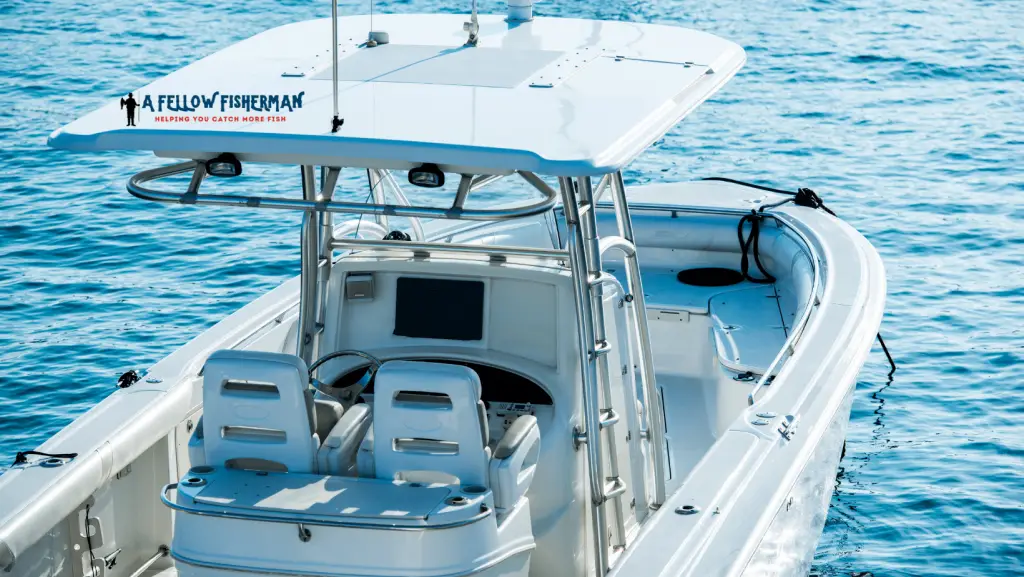
Want to know what deadrise is and how it affects your boating experience? You’re in the right spot!
Boats with more deadrise tend to ride higher in the water, which gives you a smoother, more comfortable experience when on the water. This is due to the angle at which the boat meets the waves – boats with more deadrise have a shallower angle, while boats with less deadrise have a steeper angle.
With a better understanding of how deadrise impacts your boat’s performance, you can select the perfect vessel for your needs and ensure a smooth, enjoyable day on the water. Whether you’re looking for fishing boats, ski boats, or pontoon boats, consider the amount of deadrise each one has before making your purchase.
Deadrise Explained
Deadrise on a boat is the angle of the hull with respect to the horizontal plane. For example, a flat bottom boat will have a zero-degree deadrise because the hull is parallel to a horizontal plane. On the other hand, a v-shaped hull can have as much as a 25-degree deadrise at the bow.
That is deadrise explained in a nutshell, but there is more to it, especially if you are in the market for a new boat. When buying a new boat, you will undoubtedly want to consider deadrise and how it will affect your boating experience.
Advantages and Disadvantages of Deadrise on a Boat
Advantages of Deadrise
- The more deadrise a boat has, the easier it will cut through waves
- Deadrise increases the sharpness of turns
- More deadrise results in less spray
Disadvantages of Deadrise
- More deadrise = More Draft – your boat will require deeper water
- Less stability when compared to flat bottoms, pontoons, catamarans
- More horsepower is required with more deadrise
How to Measure Deadrise on a Boat
To measure the deadrise angle:
- Start at the transom and use a level to find a horizontal line.
- Place the level on the hull perpendicular to the keel line and draw a horizontal line.
- Measure the distance from this line to the point where the bottom of the hull meets the side (the chine).
This measurement is the deadrise.
For a video explaining how to measure deadrise, using an app on your phone, check out the resource below from Airmar and follow along to make the process easier.
Common Questions Related to Deadrise
What is a good deadrise on a boat?
This depends on what you will be using your boat for. For example, a deadrise isn’t as crucial if you look for a boat to use in calm waters. However, deadrise becomes more of a factor if you want a vessel that can handle choppy waters or even go offshore.
What is the best deadrise for a fishing boat?
The real question is whether you will be fishing offshore, in a bay, on the flats, or on any other calm waters.
A deep v-hull (20-25 degree deadrise at the bow) will provide optimal performance when fishing offshore.
A bay boat, however, will be in the 10-15 range of deadrise and will suit you just fine as long as you stay inshore, then pick and choose your calm days to head offshore.
A flat bottom boat is best kept inshore, although I have plenty of friends that take their Carolina skiffs 40 miles out. A flat bottom, as stated earlier, has a zero-degree deadrise and will provide good stability to move around the deck often but will lack its ability to cut through chop.
What’s considered a deep V boat?
A deep V boat is a vessel with a deadrise greater than 20 degrees. Deep V hulls are designed for offshore use and provide a smoother ride in rough waters.
What is the difference between deadrise and transom deadrise?
Transom deadrise is the angle of the hull at the transom or back of the boat. This is different from deadrise, which is the angle of the hull at any given point. Transom deadrise is less than deadrise because the back of the boat sits lower in the water than the rest of the hull.
Wrapping Up

With the fall upon us, many boat owners will take the chance to look back at the summer and possibly look to purchase a new boat for next summer season. I figured now was a good time to review some basic terminologies used when evaluating boat performance on paper. My boat has a 14-degree deadrise. I mostly use it for inshore fishing and taking the family from island to island. I will venture offshore occasionally, and the 14-degree deadrise suits me perfectly. There is more to consider than just deadrise, so I have also covered those topics. Check out the rest of my articles here.










